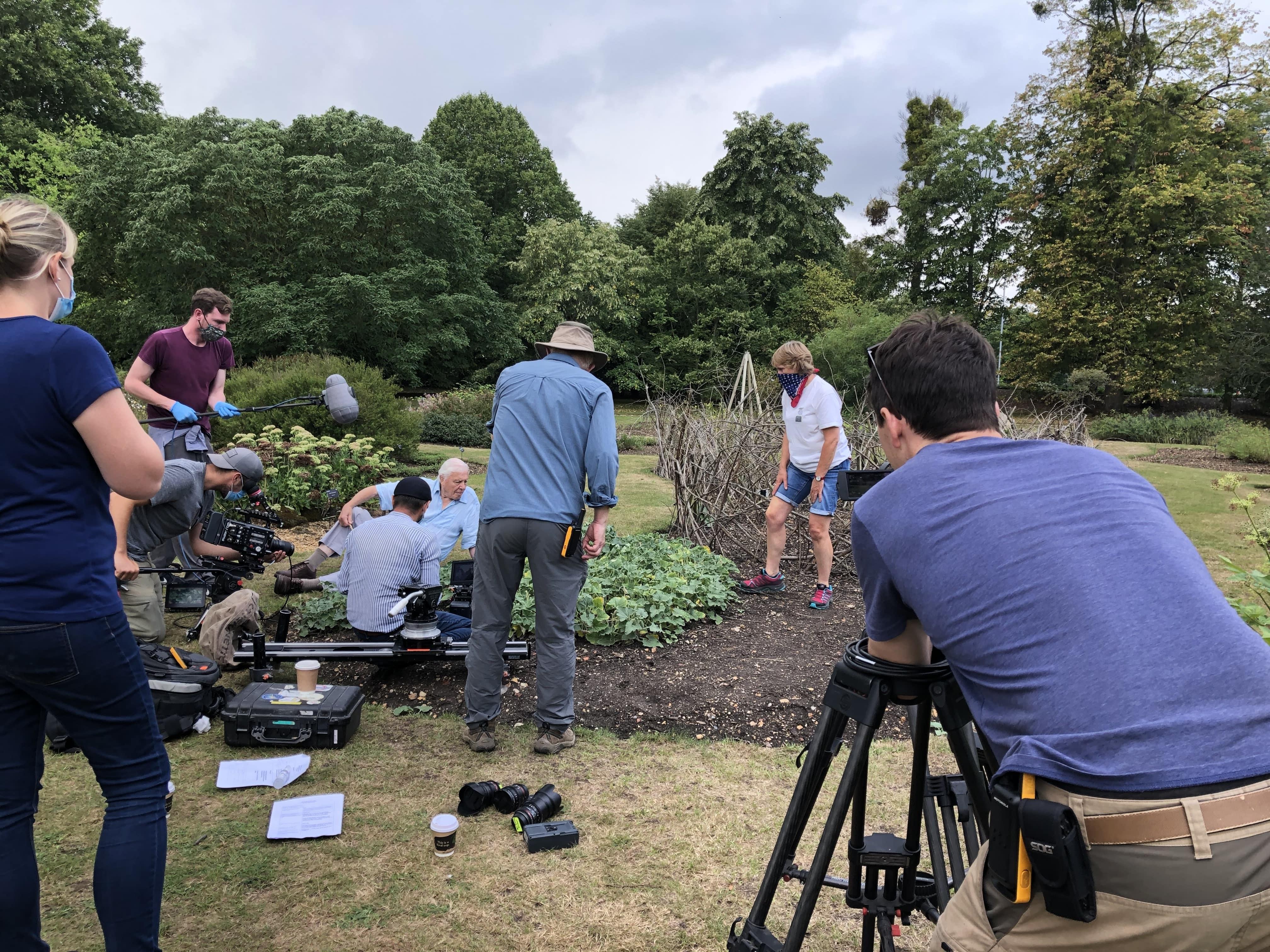
Submitted by H.L. Jones on Wed, 19/01/2022 - 00:00
The acclaimed new BBC series The Green Planet has wowed viewers by showing plants as they've never been seen before. Using pioneering filming techniques, the series shows plants from their own perspectives and timescales, revealing that they are just as aggressive and competitive as animals are when it comes to the fight for survival.
The series features plants from cross the globe, from tropical forests to the frozen poles, deserts to water worlds. Filming for the series took place all over the world from Costa Rica to Crotia, and in Episode 3 viewers are taken to the Cambridge University Botanic Garden. The Garden sits under the Department of Plant Sciences, with Director Professor Beverley Glover and Curator Dr Sam Brockington also heading up research groups and teaching in the Department.
Airing on Sunday 23 January, Episode 3 titled Seasonal Worlds shows how plants contend with seasonal changes, often going from a frozen world to a green heaven in just a few weeks. The episode features plants from the Botanic Garden's collection, with Sir David Attenborough exploring the Garden's Systematic Beds, which showcase plant classification and include a diverse range of temperate herbaceous plants that provide a summer spectacle.
The Garden's Curator Dr Sam Brockington, who oversees its plant collection, remarks “It was a privilege to welcome Sir David and The Green Planet’s crew to the Garden. Our plant collection of more than 8,000 species from around the globe and supports world-class plant science research. It’s very exciting to have some of our collection featured in this landmark series. Watching Sir David wander through our Systematic Beds explaining some of the processes and mechanisms plants use to disperse their seeds was an absolute joy for us.”
Filming took place in late August 2020, with Garden staff working with the Green Planet production team before this to select plants to feature in the episode that did 'cool things' and that were likely to be in season at the time of filming. The Garden's staff then worked hard to keep the selected plants in tip top condition, ready for their screen debut, which was no mean feat given August's sorching temperatures and torrential rain.
Sir David Attenborough arrived before the Garden opened to the public for the day. A former student of Cambridge University, Sir David remarked how he hadn’t visited the Garden for a very long time. As he stood looking up at one of the giant cedars, he loved hearing how Darwin and Henslow had walked in the Garden together discussing the evolution of plants. The weather, in true British style, was unsettled with huge storm clouds but as filming began, the clouds broke and the sun burst through. Executive Producer Mike Gunton remarked afterwards how, wherever the team are, the sun always seems to come out when Sir David walks on set.
The team used slow-motion imagery to capture some of the the mechanisms plants use to disperse their seeds. One of the plants the team filmed was the Garden's squirting cucumber, Ecballium elaterium, a trailing herbaceous plant in the gourd family that is native to the Mediterranean region. It has distinctive explosive fruits, that upon reaching maturity detach from the stem with force, ejecting their brown seeds up to three to six metres from the parent plant. The team also filmed the Garden's Himalayan balsam, Impatiens glandulifera, who's seed pods pop when ripe spreading the seeds up to seven metres from the parent plant.
Dr Brockington remarks “There’s an important message underlying the series, as 40% of the world’s plants are threatened with extinction and plants are definitely our ally when it comes to climate change and ensuring that we have enough food to eat. I hope this series will connect people with plants, show how vital they are in supporting all life on Earth and help people understand the role botanic gardens play in conserving these wild and enigmatic plants. I also hope it will inspire people to visit botanic gardens to see these rare and unusual plants for themselves.”
